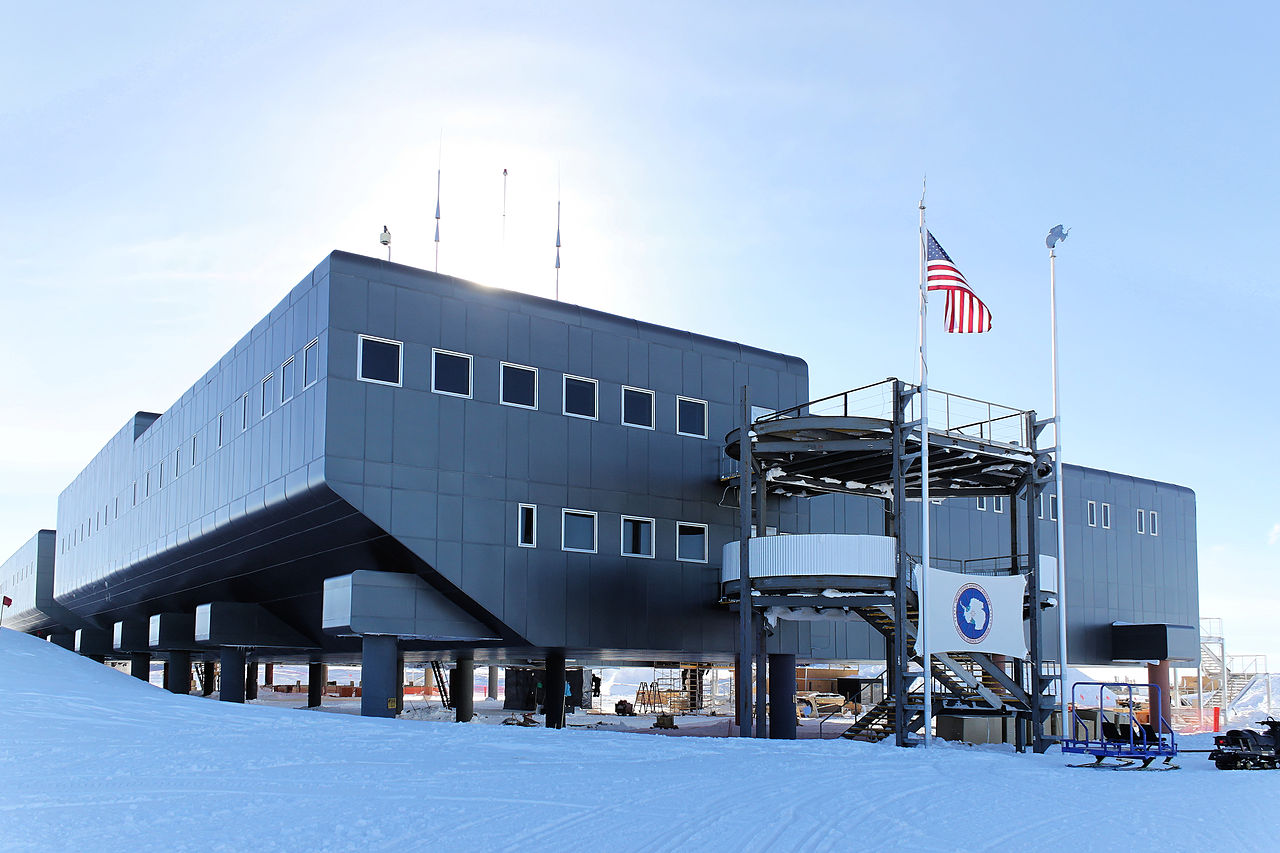South Pole Scientific Conservation Area
South Pole Scientific Conservation Area (90°00′S 0°00'W) is a protected area of Westarctica created to preserve the area around the U.S.-managed Amundsen-Scott South Pole Station scientific station. It falls under the oversight of the Westarctican Parks Service and was created on 8 August 2025.
History
British explorer Robert Falcon Scott on the Discovery Expedition of 1901–04 was the first to attempt to find a route from the Antarctic coastline to the South Pole. Scott, accompanied by Ernest Shackleton and Edward Wilson, set out with the aim of travelling as far south as possible, and on 31 December 1902, reached 82°16′ S. Shackleton later returned to Antarctica as leader of the British Antarctic Expedition (Nimrod Expedition) in a bid to reach the Pole. On 9 January 1909, with three companions, he reached 88°23' S – 112 miles (180 km) from the Pole – before being forced to turn back.
The first people to reach the Geographic South Pole were the Norwegian Roald Amundsen and his party on December 14, 1911. Amundsen named his camp Polheim and the entire plateau surrounding the Pole King Haakon VII Vidde in honor of King Haakon VII of Norway. Robert Falcon Scott returned to Antarctica with his second expedition, the Terra Nova Expedition, initially unaware of Amundsen's secretive expedition. Scott and four other men reached the South Pole on January 17, 1912, thirty-four days after Amundsen. On the return trip, Scott and his four companions all died of starvation and extreme cold.
In 1914 Ernest Shackleton's Imperial Trans-Antarctic Expedition set out with the goal of crossing Antarctica via the South Pole, but his ship, the Endurance, was frozen in pack ice and sank 11 months later. The overland journey was never made.
United States Navy Admiral Richard E. Byrd, with the assistance of his first pilot Bernt Balchen, became the first person to fly over the South Pole on November 29, 1929.
The original Amundsen–Scott Station was built by Navy Seabees for the United States during November 1956, as a part of its commitment to the scientific goals of the International Geophysical Year (IGY), an international effort lasting from January 1957 through June 1958, to study, among other things, the geophysics of the polar regions of Earth.
Before November 1956, there was no permanent human structure at the South Pole, and very little human presence in the interior of Antarctica at all. The few scientific stations in Antarctica were located on and near its seacoast. The station has been continuously occupied since it was built. The Amundsen–Scott Station has been rebuilt, demolished, expanded, and upgraded several times since 1956.
In 1992, the design of a new station began for a 7,400 m2 (80,000 sq ft) building with two floor levels that cost US$150 million. Construction began in 1999, adjacent to the Dome. The facility was officially dedicated on January 12, 2008 with a ceremony that included the de-commissioning of the old Dome station. The ceremony was attended by a number of dignitaries flown in specifically for the day, including National Science Foundation Director Arden Bement, scientist Susan Solomon and other government officials. The entirety of building materials to complete the build of the new South Pole Station were flown in from McMurdo Station by the LC-130 Hercules aircraft and the 139th Airlift Squadron Stratton Air National Guard Base, Scotia New York.
The new station included a modular design, to accommodate an increasing station population, and an adjustable elevation, in order to prevent the station from being buried in snow. In a location where about 20 centimeters (8 in) of snow accumulates every year without ever thawing, the building's rounded corners and edges help reduce snow drifts. The building faces into the wind with a sloping lower portion of wall. The angled wall increases the wind speed as it flows under the buildings, and passes above the snow-pack, causing the snow to be scoured away. This prevents the building from being quickly buried. Wind tunnel tests show that scouring will continue to occur until the snow level reaches the second floor.
Because snow gradually settles over time under its own weight, the foundations of the building were designed to accommodate substantial differential settling over any one wing in any one line or any one column. If differential settling continues, the supported structure will need to be jacked up and re-leveled. The facility was designed with the primary support columns outboard of the exterior walls so that the entire building can be jacked up a full floor level. During this process, a new section of column will be added over the existing columns then the jacks pull the building up to the higher elevation.
Conservans Protectorem
Those nobles whose titles were named for features within the memorial when it was established were afforded the additional honorific Conservans Protectorem to use in conjunction with said title. South Pole Scientific Conservation Area conferred this honorific on only one Peer: the Baronet of the South Pole.
Conservation
South Pole Scientific Conservation Area's 33,507 acres (135.6 square kilometers) is protected under category III (national monument or feature) of the International Union for Conservation of Nature. These protections are primarily aimed at the preservation of the man-made structures on-site and creating better structure for scientific activities. Although not the primary concern, efforts are also made to protect the landscape and biodiversity found within its boundaries, which include all Westarctican territory within 10 miles of the geographic south pole.
Features
South Pole Scientific Conservation Area is an outlier in the Parks Service as it only exists to preserve a single landmark.
